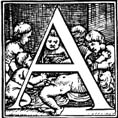
book collector’s wildest dreams came true when a Canadian pathologist found an unbelievable treasure in a neglected volume of Vesalius’ De humani corporis fabrica. Read Gerard Vogrincic’s amazing story:
By Dr. Gerard Vogrincic MD, FRCPC
I am sure that most serious collectors, whatever their field of interest, dream of discovering or acquiring one very special item. In the field of rare books in science and medicine, a copy of De humani corporis fabrica owned and extensively annotated by Andreas Vesalius is truly unique! That the annotations were most likely meant for a third edition of this book, which was never published, makes this discovery even more incredible and important.
As a collector of rare books, I have always been attracted to books with annotations. I am fascinated by the handwritten notes of past readers, some of them written hundreds of years ago. Who were they? Where were they when they wrote them? Why did they write them? Lastly, there is always the highly unlikely possibility that they were written by a significant figure, someone we would still know today.
I find it very fortunate that most collectors seem to view annotations as defects and put more value on non-annotated copies. This was certainly the case with the 1555 edition of De humani corporis fabrica that I purchased at auction in 2007. I am convinced that the extensive annotations throughout this particular copy made it unattractive to other collectors, and the book did not attract much attention at auction.
It was soon after I acquired the book that I began to examine it thoroughly. Initially, it was the extent of the annotations that intrigued me most. The 1555 edition of De humani corporis fabrica is a large folio of over 800 pages, and the annotations cropped up throughout the book, from the beginning to almost the last page. I have many other annotated books in my collection, and none of them have as many annotations as this one.
I also found the nature of the annotations to be very unusual. In many cases sentences and even paragraphs had been crossed out and rewritten in the margin. On some pages, these marginal notes had also been crossed out and rewritten. Although I could not read them, I could see that they were written in Latin and it was clear that the annotator was rewriting sentences and paragraphs rather than making notes. In other annotated books I own, sentences are underlined and there are marginal notes, but nothing like the rewriting of paragraphs I was seeing here.
I could also see that this person had read the entire book very carefully. There were numerous corrections to the smallest details throughout the book… spelling errors, commas to periods, colons to semicolons. Not an easy task for such a large volume of difficult Latin reading. I also noticed that the name of Vesalius’ father, Andreas, was crossed out in the introduction… curious indeed!
These annotations were clearly not those of a typical student or casual reader, and to me, they raised the possibility that they were made by Vesalius himself. But how does one go about determining if the annotations were by really written by Vesalius?
An obvious place to start would be to compare the handwriting of the annotations with known specimens of Vesalius’ handwriting. Examples of handwriting by Vesalius are extremely rare, largely because he burned his early books and papers, as related in his book Epistle on the China Root published in 1546. There are fewer than ten known existing letters that had been written by Vesalius, but after an extensive search on the internet, I was able to get hold of excellent photocopies of two Vesalius letters from the Waller Manuscript Collection at Uppsala University.
When I received the copies of these letters and compared them with the annotations, I had by far my most exciting experience ever as a collector. The handwriting of the annotations was absolutely identical to the handwriting in the letters. There was match after match… between words, letters, spacing, flourishes at the end of words… everything matched! I was then certain that this was an annotated copy of Vesalius’ De humani corporis fabrica written by his own hand.
Even though I could neither read nor understand the annotations, I knew that this was a book of great significance and value, not just to collectors, but also to many others, including scholars and historians. What was Vesalius writing, and why? The annotations had to be translated.
It was clear to me that a discovery of such great importance would require a world class scholar in medical history to interpret the contents, but who? I have always been interested in the history of medicine, and one name I was very familiar with was Dr. Vivian Nutton, Emeritus Professor at the UCL Center for the History of Medicine. When I emailed Dr. Nutton and told him what I thought I had, he responded with interest, but also cautioned that I should not be too hopeful that the annotations were by Vesalius himself. He requested that I send him some images of the annotated pages, and he would then get back to me with his opinion.
It was only after Dr. Nutton saw the images and began translating the annotations that he became as excited as I was. It was also clear to him, based on his translation of the annotations, that they could only have been written by Vesalius. This was confirmed by Dr. Nutton when he came to thoroughly examine the book in person. I was amazed at Dr. Nutton’s talent after I received his transcript of the annotations and read his fantastic paper giving the first scholarly discussion of them. It was a thrilling experience for me to watch a world class historian at work, and I could see that he was at least as if not more thrilled than I was at this spectacular discovery.
Andreas Vesalius’ own copy of De humani corporis fabrica… one of the most important books in history, extensively annotated by its own author, undiscovered for centuries. The word incredible doesn’t even begin to describe it!
